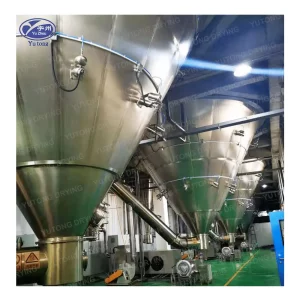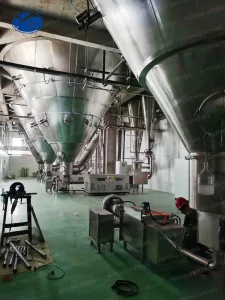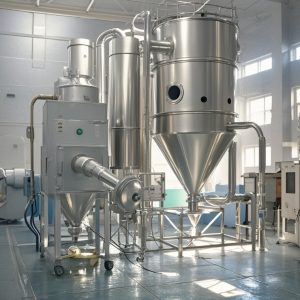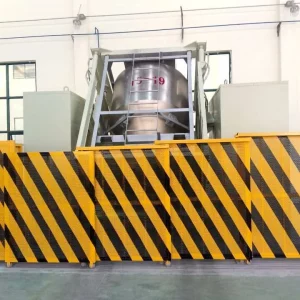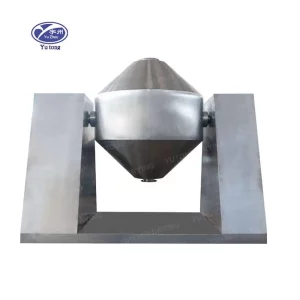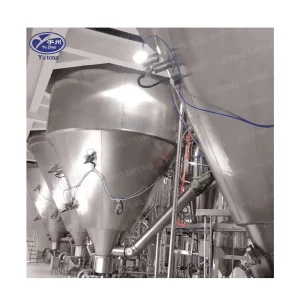In the world of spray drying, precision and efficiency are key to achieving high-quality results. This article explores how the integration of a spray dryer inert loop and a dehumidifier can enhance the spray drying process, particularly for sensitive applications like nano spray drying and hemp oil processing.
Understanding Spray Dryers
Spray dryers are essential in converting liquid solutions into dry powders by rapidly drying them with hot gas. They are widely used in industries such as pharmaceuticals, food processing, and chemicals. The process is efficient and helps preserve the properties of the original material.
The Principle of Spray Drying
Spray drying involves three fundamental processes: atomization, drying, and separation. The liquid feed is atomized into fine droplets, which are then dried using hot gas, resulting in the formation of dry particles. The separation process ensures that the dried particles are collected efficiently.
Spray Dryer Components
A typical spray dryer consists of several key components, including the atomizer, drying chamber, and cyclone separator. The atomizer creates fine droplets of the liquid, which are then introduced into the drying chamber, where they are exposed to hot air, resulting in the evaporation of the solvent and the formation of dry particles.
Advantages of Spray Drying
Spray drying offers several advantages, such as rapid drying, the ability to handle heat-sensitive materials, and the production of uniform, fine particles. These benefits make spray drying a preferred method in various industrial applications.
Specific Applications
Nano Spray Dryer: This is a specialized type of spray dryer designed to produce nanoparticles. It’s used in applications where precise control over particle size is crucial, such as in drug delivery systems and advanced materials.
Wholesale Hemp Oil Spray Dryer: This type of spray dryer is used to process hemp oil into a powdered form, making it easier to handle and incorporate into various products.
The Role of the Inert Loop
An inert loop is a critical component in specific spray-drying applications. It recycles the drying gas and prevents oxidation, which is particularly important when dealing with sensitive or flammable materials.
Mechanism of Inert Loop
The inert loop functions by introducing an inert gas, typically nitrogen, into the drying process. This inert atmosphere prevents oxidation and reduces the risk of explosions, especially when drying flammable or reactive materials.
Benefits of an Inert Loop
- Safety: By using inert gases like nitrogen, the risk of explosions is minimized.
- Cost Efficiency: Recycling gases reduces the consumption of fresh drying gas, saving costs in the long run.
- Product Quality: Prevents oxidation, ensuring the quality and stability of sensitive products.
Applications Requiring Inert Loop
Specific industries, such as pharmaceuticals and food processing, often require inert loops to maintain product integrity. The inert loop is especially beneficial in applications where preserving the active ingredients and preventing degradation is essential.
Why a Dehumidifier is Essential
Dehumidifiers play a crucial role in maintaining the quality and efficiency of the spray drying process. By removing excess moisture from the air, they ensure optimal drying conditions.
Importance of Humidity Control
Humidity control is vital for achieving consistent drying results. Excessive moisture can lead to uneven drying, affecting the quality and shelf life of the final product. A dehumidifier ensures that the drying environment is stable and controlled.
Dehumidifier Functions
- Humidity Control: Maintains consistent humidity levels, which is crucial for achieving uniform drying results.
- Energy Efficiency: Reduces the energy required for drying by lowering the initial moisture content.
- Product Integrity: Helps prevent clumping and ensures a consistent particle size.
Impact on Product Quality
The presence of a dehumidifier significantly impacts product quality by preventing moisture-related issues. Products remain free-flowing, with consistent particle sizes, reducing the risk of agglomeration and improving overall quality.
Integration of Spray Dryer Inert Loop and Dehumidifier
The combination of a spray dryer inert loop and a dehumidifier can optimize the drying process, especially for complex or sensitive applications.
How They Work Together
- Pre-Drying Preparation: The dehumidifier removes excess moisture from the incoming air, ensuring it is at the optimal humidity level before entering the spray dryer.
- Drying Phase: In the drying chamber, the inert loop recycles the drying gas while maintaining low oxygen levels, which is vital for sensitive materials.
- Post-Drying Process: The dehumidified air ensures the powder remains dry and free-flowing, preventing any post-drying clumping or agglomeration.
Benefits of Integration
Integrating these technologies enhances process efficiency and product quality. The inert loop and dehumidifier work in tandem to create a controlled environment, minimizing risks and optimizing drying conditions.
Applications in Nano Spray Drying
In nano spray drying, where particle size and stability are paramount, the integration of these technologies ensures the precision and consistency required for high-quality nanoparticles.
Applications in Hemp Oil Processing
For hemp oil, which can be sensitive to oxidation, the inert loop prevents degradation. At the same time, the dehumidifier ensures the final product is free of moisture, enhancing its shelf life and usability.
Considerations for Choosing the Right Equipment
When selecting a spray dryer system that incorporates both an inert loop and a dehumidifier, consider the following factors:
Type of Material
Different materials may require specific conditions. Understanding the thermal sensitivity and oxidation potential of your material is crucial.
Desired Particle Size
For applications like nano spray drying, precise control over particle size is necessary. Ensure the equipment can achieve the desired specifications.
Safety Requirements
If dealing with flammable or reactive substances, an inert loop is essential for safety purposes.
Cost and Efficiency
Evaluate the cost implications and energy efficiency of the system. While an inert loop and dehumidifier may involve higher upfront costs, they can offer savings in terms of energy consumption and product quality in the long run.
Equipment Customization
Consider whether the equipment can be customized to meet specific process requirements. Customization may involve modifications to the drying chamber, atomizer, or gas recycling system to suit particular applications.
The Future of Spray Drying Technology
As industries continue to innovate, the integration of advanced technologies like inert loops and dehumidifiers in spray drying systems is likely to become standard practice. These components not only enhance safety and efficiency but also open up new possibilities for processing sensitive materials.
Technological Advancements
Future advancements may include more sophisticated control systems for even greater precision, further reducing energy consumption and improving product quality.
Environmental Considerations
With a growing emphasis on sustainability, the development of eco-friendly spray drying systems that minimize waste and energy use will be a key area of focus.
Industry Trends
Industry trends suggest a shift towards more versatile and adaptable spray drying systems. These trends reflect the need for systems that can handle a wide range of materials and applications, ensuring long-term viability and competitiveness.
Conclusion
The combination of a spray dryer inert loop and a dehumidifier represents a powerful synergy for optimizing the spray drying process. Whether you’re working with nanomaterials or processing hemp oil, these technologies ensure safety, efficiency, and high-quality results. As the field of spray drying continues to evolve, staying informed about these advancements will be crucial for those looking to maintain a competitive edge in their industry.

